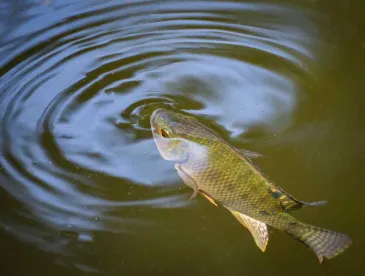On 1 April, the U.S. Supreme Court (the Court) put to rest the long-simmering dispute between Florida and Georgia over Georgia’s use of water from the Apalachicola-Chattahoochee-Flint River Basin (the Basin) that Florida contends is destroying its oyster fisheries. In a unanimous decision, the Court sided with Georgia by concluding that Florida had failed to prove that the collapse of its oyster fisheries was caused by Georgia’s overconsumption of Basin waters.
As we discussed in our prior alert, Florida sued Georgia in an original action before the Court. Florida alleged that Georgia’s unreasonable agricultural water consumption caused sustained low flows in the Apalachicola River, that these low flows increased Apalachicola Bay’s salinity, and that higher salinity in the Apalachicola Bay attracted droves of saltwater-subsisting oyster predators and associated disease, ultimately decimating Florida’s oyster population.1 Florida asked the Court to order Georgia to reduce its consumption of Basin waters, which was effectively a request to equitably apportion the Basin waters among the two states.
To obtain an order of equitable apportionment, Florida was required to make two showings: (1) proof, by clear and convincing evidence, of a threatened or actual injury “of serious magnitude” caused by Georgia’s upstream water consumption; and (2) that “the benefits of the [apportionment] substantially outweigh the harm that might result.”2 Because both Florida and Georgia are riparian states, meaning both are equally entitled to use surface water that passes through their land, the guiding principle behind the Court’s analysis was that both states have an equal right to make reasonable use of the Basin waters.
The Court resolved the case on the threshold issue of injury and causation, finding that while the collapse of Florida’s oyster fisheries was certainly an injury of serious magnitude, Florida had not proven by clear and convincing evidence that Georgia’s water use caused the injury. The Court noted that Florida’s theory on causation relied on expert testimony that ultimately failed to quantify and support the theory that Georgia’s water usage damaged the oyster fisheries. The court noted that, at most, Florida had shown that certain factors—such as increased salinity and predation—contributed to the collapse of the oyster fishery, but it had failed to prove that Georgia’s overconsumption of water was the cause of this increased salinity and predation.
In contrast, the Court found that Georgia offered a more plausible explanation for the collapse of Florida’s oyster populations: Florida’s mismanagement of its oyster fisheries through overharvesting and failure to re-shell oyster beds. In essence, Florida was attempting to blame Georgia for its own mistakes in managing it fisheries. Florida also failed to account for other causes of damage, such as prolonged drought conditions, as well as a changes in seasonal rainfall patterns, all of which may have played a role in the decline of Florida’s oyster population. Altogether, the Court found that Florida “failed to carry its burden of proving causation by clear and convincing evidence.”3 Because Florida was unable to prove causation, the Court did not address the second element required to obtain equitable apportionment.
The Court took the opportunity to note that equitable apportionment of interstate water resources requires “the exercise of this Court’s extraordinary authority to control the conduct of a coequal sovereign.”4 While the Court also emphasized that Georgia has an obligation to make reasonable use of Basin water to “help conserve that increasingly scarce resource,” it was unwilling to command Georgia to limit its water use based on the evidence before it, although it left open the possibility it might do so under the right circumstances.
The Court’s decision affirmed the findings of the Special Master, who recommended the suit be dismissed based on Florida’s failure to show injury and causation. The decision in Florida v. Georgia makes clear that increasing demands on interstate water resources will likely lead to more suits before the Court. It also signals the Court’s reluctance to step into an equitable apportionment role between two “equal sovereigns.” Moreover, in the absence of an interstate compact to apportion water, the burden for showing injury caused by another state’s water use remains high.
Given the length and complexity of the dispute between the states, and the Court’s decision to avoid becoming an allocator, this decision provides a guidepost for future water disputes between sovereigns. States sharing interstate water resources, whether surface or groundwater, are likely better served by negotiating water use allocations with their neighbors rather than relying on the Court as the final arbiter. Though the allocations themselves may be highly technical, lengthy, and require compromise, the allocation process provides a level of control that is absent from court proceedings, and the final results will likely be more comprehensive and useful for the engaged stakeholders.
Of course, the possibility exists that a state who is taking advantage of its water rights may be unwilling to compromise if the Court remains reluctant to step in unless harm and causation can be clearly shown. The decision in Florida v. Georgia may equally stand for the proposition that states who seek an equitable apportionment of interstate waters should be sure to put together a compelling injury and causation argument upfront. Doing so will both increase the odds of success before the Court and provide critical leverage to reach a settlement with opposing parties.
Finally, for industries caught in the middle of interstate water disputes, such as agricultural irrigators or shellfish aquaculture projects, it may be advisable to stay informed of any interstate disputes regarding water supply. Seeing as documentation of harm and causation will be critical in any case before the Court, maintaining evidence of harms caused by diminished interstate water resources will prove highly valuable to future litigation. For instance, the Court’s decision establishes that simply showing a reduction of shellfish populations or increased mortality is unlikely to be sufficient without additional evidence that establishes the cause of the reduction or mortality, which is an inherently difficult question given the numerous potential environmental factors that may affect the aquaculture industry. By remaining vigilant to industry impacts caused by out-of-state water consumption, those interests with the most at stake in any future litigation can be prepared to contribute to any future arguments in favor of equitable apportionment of interstate water.
1 Florida v. Georgia, slip op. at 5, 592 U.S. ___ (2021).
2 Id. at 4
3 Id. at 9.
4 Id. at 10.







 />i
/>i

